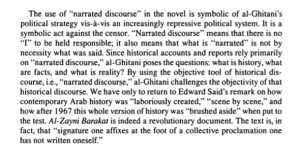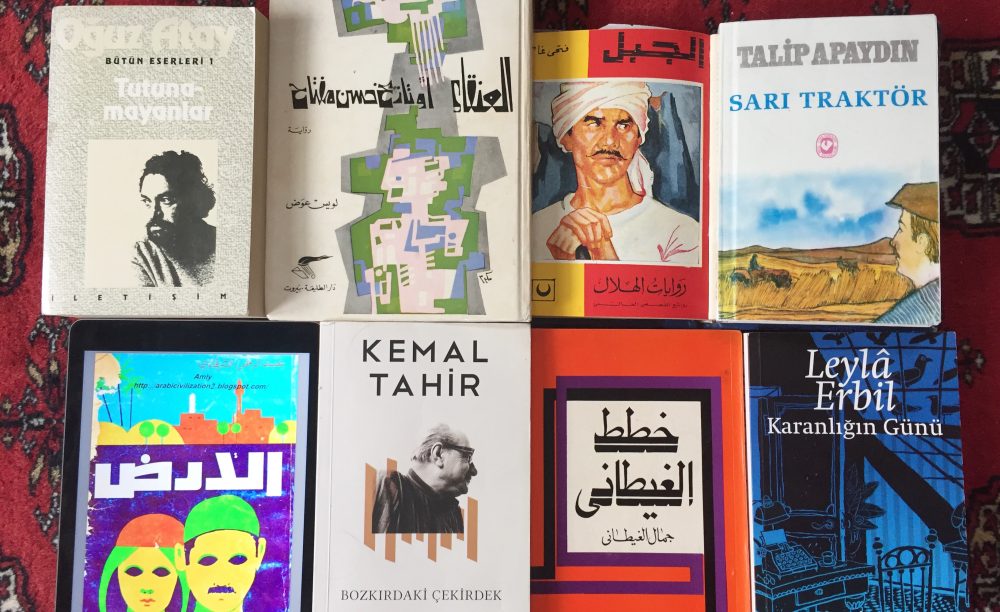Citation
Contents
Author
Richard Jacquemond is associate professor of modern Arabic language and literature at the University of Provence and a researcher at IREMAM (Aix-en-Provence). A specialist in modern Egyptian literature, he has also translated numerous novels and short story collections as well as works by political thinkers into French.
Context
this unique study explores the dual loyalties of contemporary Egyptian authors from the 1952 Revolution to the present day. Egypt’s writers have long had an elevated idea of their social mission, considering themselves ‘the conscience of the nation.’ At the same time, modern Egyptian writers work under the liberal conception of the writer borrowed from the European model. As a result, each Egyptian writer treads the tightrope between authority and freedom, social commitment and artistic license, loyalty to the state and to personal expression, in an ongoing quest for an elusive literary ideal.
Thesis
Conscience of the Nation examines Egyptian literary production over the past fifty years, surveying works by established writers, as well as those of dozens of other authors who are celebrated in Egypt but whose writings are largely unknown to the foreign reader.
Methodology
Key Terms
Criticisms and Questions
Notes
Introduction:
– this book aims to describe and analyze the major aspects of the Egyptian literary doxa such as the idea of the writer as the conscience of the nation and of literature as the mayor of society.
– this book takes as its object the literary field as defined by Pierre bourdieu which is the milieu of norms institutions and values surrounding the social space of literature.
– it is in Egypt more than anywhere else in Arab world that a strong and long-standing state, a sizable intellectual class, and then abundant production of written materials can be found in the modern period.
– The Triad of State writer and book begins in 19 century continues to Fashion literary production in ideologies of contemporary Egypt.
– Books May occupy a marginal space but the corresponding intellectual field has played an enormous role.
- The Army of Letters
September 1954 Purge of academics at Cairo University including al-Amin, Louis Awad, Muhammad Mandu r
-Hire counsel for arts and letters established 1956 Ministry of culture established 1958.
-Yusuf al-Siba’i head of Nadderite system of controlling and mobilizing writers.
1967-73 years of uncertainty
1973-81 slim pickings
1981-1991 reconstruction
1969 the beginning of the Egyptian writers Union.
2) Censorship and Censors
– Marxist leading political movements in the 1940s warband what had formed literary groups and reviews to enable intellectuals to present the literary philosophical and artistic aspects of their ideologies and to express their clandestine struggles in public. “School of the party” especially prisons and internment camps (like sonallah Ibrahim’s experience)
-people of the high dam propaganda sonallah wrote with kamal al-qilish and ra’uf mus’ad, reportage
-The closer that authors are to the centers of power the more that they are able to avoid censorship ie Mafhouz and children of the alley
– the Arabic language Academy was founded in 1932 and restricted itself to linguistic questions at the beginning of the 1950s.
– during the Socialist realism. Of the 1960s to hire counsel for the protection of arts and letters refused to recognize free verse and led a rearguard struggle against the use of spoken language in prose fiction.
-Yusuf Idris committed acts of transgression in his short stories and created a language that was written in a grammatically correct fashion but could be read as though it were vernacular disguised as pure Arabic.
-In the 1960s political restrictions on literary expression gave rise to a whole literature of dissimulation symbol and allegory of which Children of the alley is perhaps the first example.
3- the literature market
The state is first and foremost publisher under the general Egyptian Book organization established in the 1960s.
– the writers of the generation of the 1960s are given to evoking with Nostalgia the magazine al-magalla edited until 1970 by yahia hakki.
– the tradition of self-publishing among the Egyptian avant-gardes well-established throughout the first half of the 20th century fell off considerably under the Nazi regime because of the restrictions imposed on periodical publication and more generally over the control exercised by the state over the whole of book production.
-Everything conspires to make the press the end point of in the essential means toward struggling for symbolic domination in the literary field.
– being a columnist for al-ahram was the mark of veritable lifetime annuity.
– in the 1960s all the Egyptian daily papers had a weekly literary page or supplements or unpublished writing occupied a large place. each paper had its own policies the result of the paper’s editorial line and the personality of the literary editor.
-Para literature of occasional verse and the work of short story writers and cerealized fiction was an integral part of most Egyptian magazines from the 1920s to the 1960s.
4) Conscience of a Nation
– the two postulates of realism and commitment constitute the Egyptian literary doxa.
– while the political Corruption of realism rehabilitated critical realism it damage the realist model itself 1967 was a moment unique in the history of modern Arabic literature when an abundance of non-realistic Works were published.
-The tension between commitment and realism freedom and Collective causes.
-Jean Bessiere “the deflation of mimesis”
-The Narrative conventions of mimetic realism of which the Cairo Trilogy is the classic example did not break with the idea that legitimate literature is that which retains an important connection to reality as well as to the Social and Collective spheres.
– reacted to by hyperrealism typified by the smell of it.
– Egyptian version of Latin American magical realism indigenous forms of narrative heritage. Gamal Ghitani, the seven days of man, muhammad Mustagab
-Coptic contributions to Cosmopolitan literature and the extreme left.
– translation of what is literature by Sartre in Cairo in 1961.
– the closer that writers get to the field of power the more these former avant-garde writers tend to take on the authoritative pose of the great realist writers.
5) foreign translations
– in the 1950s and 1960s the proportion of translations among all published titles was around 12.5% on average. In the time from 1970 to 1985 this fell to 8% period in absolute terms there was a reduction from around 100 translate titles per year to around 50 a year in the Years following.
6) literature and identity
– an attempt to resurrect indigenous narrative forms like in Children of the alley.
– Yahya Taher Abdullah (1938-81) rebelled, went to USSR, languished in Budapest
-Yusuf Idris 1964 manifesto “nahw masrah misri” Criticize the hybrid development of Egyptian Theater and asked it to become native . Wrote a play called al-farafir, not super indigenous, more brechtian, carried out better by Nagib Surur.
-Return to nativism argued by shukri ayyad.
8)



